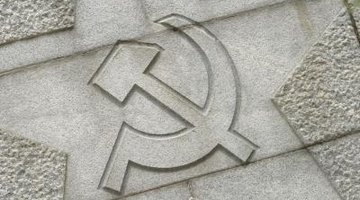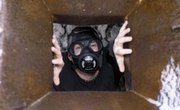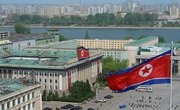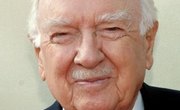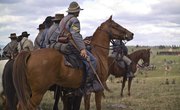Counterintelligence refers to monitoring enemy spies, obstructing their activities and providing them with false information. The Federal Bureau of Investigation has been involved in counterintelligence activities since World War I. During World War II, the FBI exposed a number of Nazi spy rings. In recent years, the FBI has apprehended terrorists and high-tech conspirators who compromised national security. Between 1946 and 1989 were decades of non-violent hostility between the U.S. and the former Soviet Union, known as the Cold War. In those years, the Cold War dominated FBI counterintelligence activities.
The Postwar Years and the McCarthy Era
After World War II, the FBI, along with other branches of government and the American people, focused its awareness on Communist groups and Russian spies operating in the U.S. As the Central Intelligence Agency led covert Cold War actions overseas, the FBI went after suspected Communists at home. In the early 1950s, the FBI arrested and executed Julius and Ethel Rosenberg, a couple accused of revealing atomic secrets to the Soviets. Senator Joseph McCarthy then led an anti-Communist crusade fueled by the investigations of an FBI program called COINTELPRO. Throughout the 1950s, the FBI exercised its authority to investigate anyone suspected of Communist ties.
Counterintelligence in the 1960s and 1970s
In the 1960s, public interest in purging Communists and Soviet sympathizers fell sharply. The assassination of President Kennedy, the Vietnam War and the civil rights movement captured America's attention, along with FBI resources. Americans grew weary and suspicious of longtime FBI director J. Edgar Hoover, just before the Watergate scandal further damaged the agency's reputation. From then on, FBI counterintelligence activities became more secretive. During this period, few counterintelligence arrests were reported; most cases involved the transmission of spy satellite data and other military intelligence.
The End of the Cold War
By the 1970s and 1980s, Cold War antagonism had lulled considerably, allowing the FBI to focus on domestic intelligence. International terrorism, however, made anti-terrorism a priority and renewed the agency's anti-espionage efforts. In the mid-1980s, the FBI discovered more than 30 cases of espionage against the U.S. government, the most since World War II. Those cases involved people spying not only for the Soviet Union, but also other nations including Israel and China. When the Cold War ended with the collapse of the Soviet Union, undetected spies such as Robert Hanssen were still collaborating with the Russians, threatening America's security.
Robert Hanssen, Double Agent
Beginning in 1985, FBI Special Agent Robert Hanssen secretly spied for the Soviet Union. He delivered classified material to his Russian handlers via "dead drops" in public places; he also exposed KGB double agents spying for the United States, which endangered their lives. Hanssen continued his espionage activities for another decade beyond the Cold War until he was caught in 2001. Because Hanssen actually worked in FBI counterintelligence, with access to the most sensitive information, his actions are considered the worst intelligence breach in American history.
Related Articles
References
Writer Bio
Shannon Leigh O'Neil, a New York City-based arts and culture writer, has been writing professionally since 2008. Her articles have appeared in "GO Magazine," "The New York Blade" and "HX Magazine," as well as online media. O'Neil holds a Master of Arts in modern art history from the City College of New York, where she also studied French and minored in classical languages.

